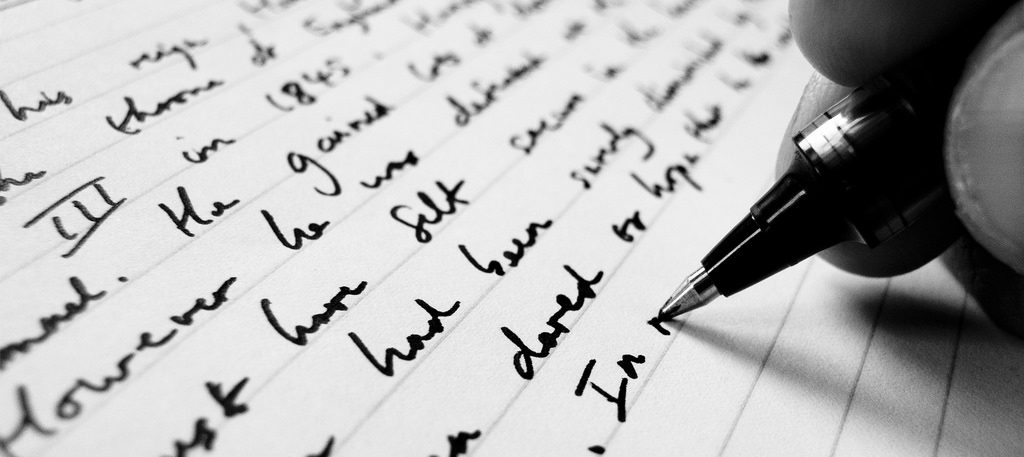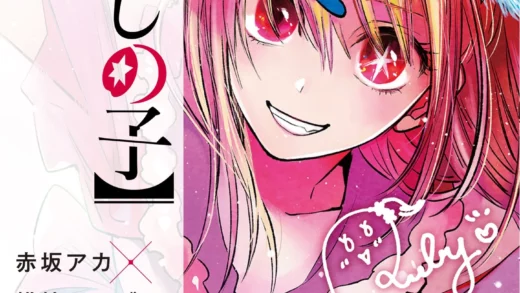On social media across the Internet, there is a single constant refrain- “How do I write a good story?” It comes from new writers eager to make their eBook fortune on Kindle, young adults who want to join in the fanfiction fray, and even experienced writers who are looking to up their game. It’s lead to a huge boom in How-To writing books, and an even bigger boom for those who offer their services to writers like editors, cover designers and marketers. The editors especially are in demand, because the truth is most writers are flying blind when it comes to writing stories.
Don’t believe me? Go on a social media forum with writers and ask them a simple question like “How do I write a good book?” or even “What is a story?” and you’ll get a thousand different answers thrown at you, because the truth is most of them don’t know the answer to either of those questions.
Oh, they know pieces of it, and the more savvy and experienced ones have pieced together quite a bit of knowledge on the topic. Mostly though, new writers will get advice like “follow the three act structure”, “have a gripping main character”, and various other sage advice about what worked for the writers who respond.
Because most writers learn to write stories by writing them, and they do that by consuming the work of lots of other writers and then copying what seemed to work for those other writers. They basically write by instinct, and then through making mistakes and finding what works, and what doesn’t, they become better writers. This is a time-honored way to learn any art, and some would argue that it’s the best way because it preserves a creative spirit of originality and helps new generations of artists add to the great body of human culture.
When it comes to writing, those people are wrong.
If that was true, why do we keep writing the same stories over and over again? Why do almost all stories follow the same basic structure, no matter the culture or level of literacy? Why do we keep seeing the same stories over and over again, generation after generation?
The answer is pretty simple- because there IS a hardwired, human pattern to storytelling that we follow over and over again- exactly because we’re human.
[Now, the followers of Joseph Campbell are all nodding their heads right now and going “Of course there is, dummy! The Hero’s Journey!” But I’m going to argue that while Campbell was on the right track, he also complicated things up more than they needed to be. So simmer down, Jack!]
One of the nice parts about living in the age we do is that researchers on big questions have been able to use things like Magnetic Resonance Imaging (MRI) to look inside the human brain in real time and look at what people’s brains are doing during certain activities. Unsurprisingly, a few of those researchers decided to find out what happens inside the human brain when people consume stories, and they learned many interesting things.
One thing they learned is that the human brain is optimized for learning from the experiences of not just ourselves, but from the experiences of others. We don’t have enough time to experience everything ourselves, so instead our brains crowdsource information and make a point of learning from how other people did things. It’s a survival mechanism left over from the days when we were cavemen, and every bit of knowledge about the world we had could be a key to living another day. The ones who didn’t learn fast died faster.
So, what are stories then?
Stories are people sharing their experiences so that others can learn from them. They’re us telling the world what someone did when they were faced with a problem, so they can learn from that person’s experiences and gain knowledge about the world and the human experience.
So therefore, at it’s core, for something to be a story it has two requirements:
- A character does something.
- The character’s choices produce results.
This is because our brains are trying to learn from that person’s actions, so obviously they must do something, and those actions must also have results, otherwise we haven’t learned from them.
So, there you are, cause and effect- that’s all that you need to tell a story.
And if I put it that way, you do this every day, right? Anytime you, or your mother, or crazy old grandpa are telling a story, you use this structure- “I did these things, and this was the result.”
That is the root seed from which all storytelling comes- a character does something and gets results.

“I kicked the dog, and he bit me.”
Of course, as you obviously already know, there’s a little more to it than that. Saying “I kicked the dog and he bit me” may be a story, but it’s not exactly a gripping one that’s going to hold an audience spellbound for hours or express your artistic vision.
To tell an interesting story, you need details, the more the better! (But only the right ones…)
Also, there is a simple process all humans go through when approaching a problem and the audience for a story likes to know the details of that process whenever possible.
So, we break those two parts into several clear steps.
A character does something can be broken into several steps:
- The character has a Need.
- The character chooses a Goal based on that need.
- The character finds there is Opposition to achieving that goal.
- The character comes up with a Plan to overcome the opposition.
- The character takes Action based on that plan.
The character’s choices producing results can also be broken into steps:
- Results:
- The action fails> return to Plan.
- The action succeeds> go to New State.
- The character’s situation has changed because of the results and they’re in a New State.
To make it clearer, let’s give an example.
- Bob is Thirsty. (Need)
- Bob decides to get a glass of water. (Goal)
- Bob finds there are no clean cups. (Opposition)
- Bob decides to do dishes. (Plan)
- Bob does the dishes. (Action)
- Bob now has a clean glass. (Results)
- Bob drinks a glass of water and feels satisfied. (New State)
Note that this is still extremely simple, but that’s because it’s also infinitely flexible. It doesn’t matter whether it’s Bob getting water or War and Peace, all human stories are using a variation of this structure at their very core and when reduced to the simplest level. If a story doesn’t meet (almost) all of these steps, it isn’t a story to the human brain.
There has to be a character who has a Need and a resulting Goal, who faces Opposition, finds a Plan to overcome it, takes Action and gets Results that will put them in a New State. All of these steps are crucial because otherwise there’s nothing to learn, and the human brain isn’t interested. If I show you a video of Bob walking across the room getting water from the fridge and sitting down to drink it, you’ll get bored because there’s no challenge there (which is where drama comes from) and nothing to learn from.

Let’s go into each of the steps in more detail:
Need:
The character needs a reason to take action, and this reason can be active (they choose to take action), or reactive (someone else forces them to take action), but there must always be a cause for what they do in the story. Active characters are almost always better, since the audience can learn more from a character who is trying to actively accomplish a goal, and they’re easier to write.
In either case, the character will have a Need, something which is driving them to attain their goal. At its core, this need will usually be based on one of the Basic Human Needs that all humans have- Food, Safety, Sex, Sleep, Companionship, Self-Actualization, and so on. The character tries to fulfill that need through taking action, whether they consciously understand that need exists or not.
This can be as simple as being thirsty and needing a glass of water, or as complex as defending their galactic empire from an alien invasion, but it will always be rooted in a basic human need when it comes down to it. (We don’t tend to things that don’t try to meet a human need in some way.)
Goal:
Goals always fall into one of three simple categories:
- Attain
- Maintain
- Lose
The character either wants something new (attain), they want to avoid losing something that already exists (maintain), or they no longer wish to have something and try to get rid of it (lose). All characters will have one of these three goals, with the details varying by the story. This will be based on solving the problem created by their Need.
Goals will often be based on solving obstacles that prevent the character from achieving a human need rather than directly trying to achieve a human need. (ie Losing weight in order to get sex. Losing weight is the goal, but it is still rooted in the human need of sex.) Directly solving more complex needs can often be hard and painful, so characters will often choose goals that are smaller steps towards that greater need.
Opposition:
If a need can be met without opposition, it usually isn’t worth telling a story about. In fact, often the heart of a story isn’t the need or action being taken to meet that need, it’s the challenges that come with meeting that need. If there’s no opposition to the character’s actions, then the story moves to the New State phase and ends there. (Along with the audience’s interest.)
Opposition can come in any form that prevents the character from achieving their Goals, however these too tend to fall into one of several categories:
- Active opposition.
- Passive Opposition.
- Lack of resources.
- Lack of ability.
Active Opposition– an opponent who is actively trying to prevent the character from achieving their goal. Usually they have the same (or similar) goal as the main character, and this common goal brings them into direct opposition with each other. Often they also have a superior position to the main character in some way, at least in terms of knowledge, resources, power or ability. (After all, if they weren’t able to give the main character a challenge, they’re not much of an opponent, are they?) Usually, they are also made specifically to exploit the weakness of the main character, thus making them exactly the right person to make the main character’s life difficult.
Passive Opposition– an opponent who stands in the way of the character achieving their goals, but who isn’t pursuing the same goal as the main character. They are pursuing their own goals, but because of their existence/presence it prevents the main character from achieving their goal. Think of this like a sleeping guard dog that prevents a character from sneaking into the house, the parent who says the main character must clean their room before they can go out, or a clerk at a tax office who says the main character must follow procedure before they can have what they want as time is running out.
Lack of Resources– the character has a goal, but lacks the physical resources (time, money, friends, contacts, clothes, equipment, etc) to achieve that goal. This will usually require the character to pursue other smaller goals first (like getting a job to earn money) to achieve this goal.
Lack of Ability– the character has a goal, but lacks the personal skills, requirements, or knowledge needed to reach that goal. This can most often be fixed through training and personal improvement, or occasionally by finding someone else who has the abilities needed and getting them to do it.
Note that a single story can have more than one obstacle to a single goal. Just as there can be big goals and little goals, there can be big obstacles and little obstacles as well, and often the character needs to accomplish several little goals first to be able to accomplish the big final goal.
Plan:
A character with a goal faced by obstacles will need to make a plan, which is the route the character decides to take to achieve their goal. This can be the result of self-reflection, previous results, or gut instinct, and plans can take seconds to make, or hours, or years in the context of the story. This step is actually semi-optional, as sometimes the “Plan” step is skipped over because it’s obvious, or for dramatic effect. (Jumping from Goal to seeing the character in Action to make the audience want to see how the character’s actions will achieve that goal.)
Action:
Action is simply the character trying to follow their plan and seeing what the result is. Again, this can be a simple single movement, or a long and complex project that takes years to finish. The writer may choose to detail every step of the plan, or just a few key steps, or even jump from the beginning to the end of the Action step. However, the character must make a choice and do something, even if their choice is just to sit there and cry.
Results:
Of course, there are really only three possible results:
- They succeed and achieve their goal.
- They fail and must either try again or give up.
- They only partly fail or partly succeed and must either try again or give up.
If the character tries again, they go back to the Planning stage, and if they succeed and have met their Need they move on to the New State. If they give up, they have also moved into a New State- but it’s one where they failed to achieve their goal and are dealing with the consequences of that failure.
New State:
If the character achieved their goal, then the story is finished, or (if part of a larger story) then this portion of the story is finished. They have their goal, and are now either satisfied or not satisfied with the result based on the Need they were trying to fulfill.
Often, the character cannot reach a New State without first overcoming some personal flaw, in which case the New State is actually one where the character has changed part of themselves in order to achieve their true (often unconscious) goal.
So, there you have it, the fundamental structure humans use when telling stories.
You will see many variations of this formula kicking around online. Whether it’s Dan Harmon’s Story Circle, Chris Vogler’s take on The Hero’s Journey, or Michael Hague’s Six Story Steps, but ultimately, they’re just this very basic formula with extra steps added (or removed) for effect. One expanded version of this formula is John Truby’s Twenty-Two Step Story Structure, which takes a formula like this one (which was partly based on Truby’s 7 Essential Steps) and shows how typical modern novels and films tend to expand on this structure and what they add to it. (His book is highly recommended!)
However, just because something follows the above steps that doesn’t mean it’s a good story, it just means that it meets the basic requirements to be called a story. It only shows a character doing something and getting results, or in other words, showing how an action might play out.
To have a good story, one which is meaningful and the audience actually gets something from, that requires not just a story, but a Moral Argument as well.


